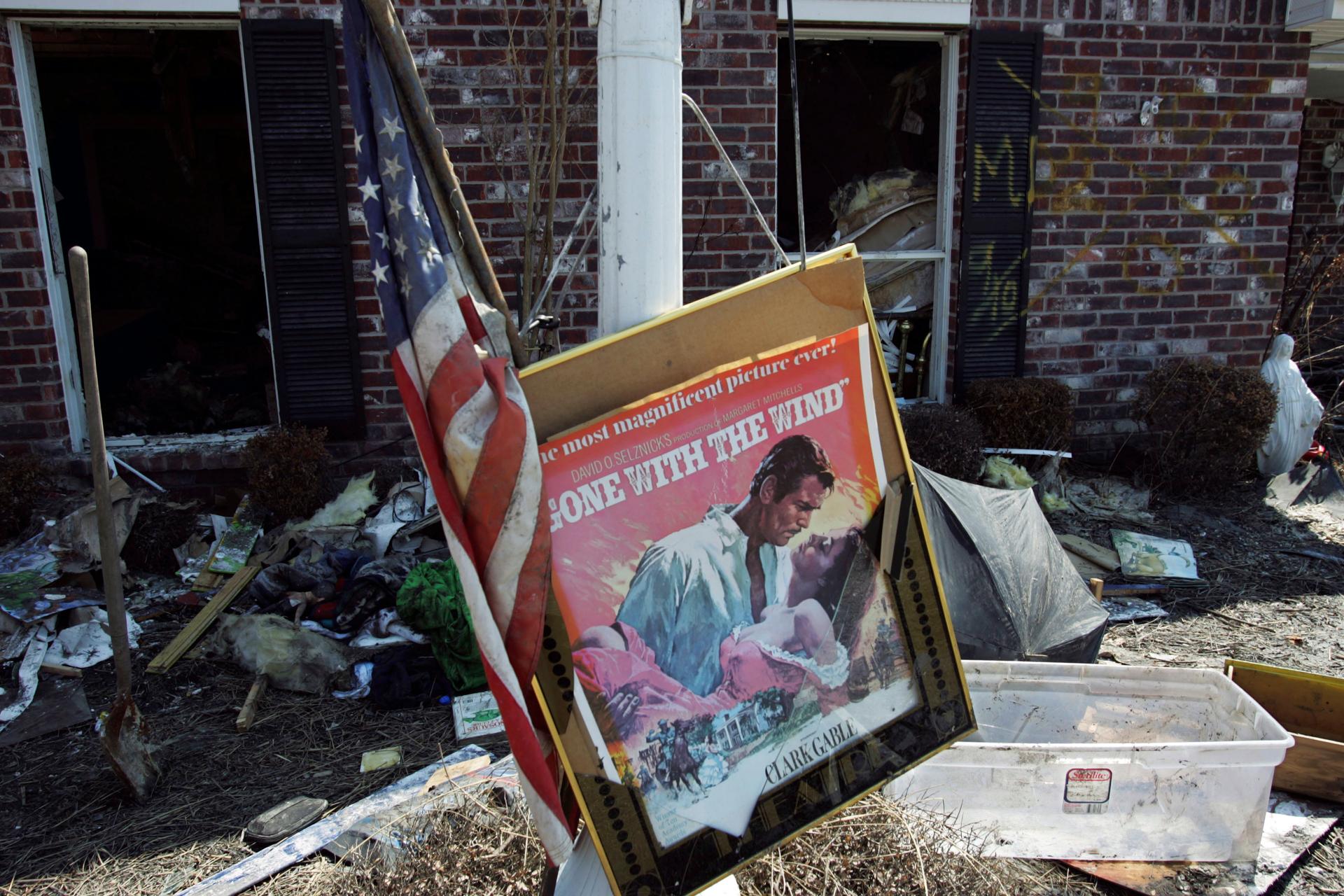After Charlottesville, some are asking what to do about ‘Gone With the Wind’
A movie poster for "Gone with the Wind" sits in a front yard of a home damaged by Hurricane Katrina in Chalmette, Louisiana, in St. Bernard Parish September 28, 2005.
oembed://https%3A//www.youtube.com/watch%3Fv%3DYSFMHwX1eLM
More and more Americans are coming to view Confederate Civil War monuments in a new light these days. The same is starting to become true for the beloved movie, “Gone With the Wind,” a Confederate monument of a slightly different kind.
Recently, the historic Orpheum Theater in Memphis, Tennessee, pulled the film from next year’s annual screening over complaints that it is racially insensitive. Other theaters, TV networks and schools that regularly show the film are wondering how best to present it in light of modern reappraisals of its story and themes.
Aisha Harris, host of the podcast “Represent,” recently wrote an article about the controversy for Slate. “The fact that the Orpheum Theater decided not to [show the film] was, I thought, kind of surprising in the wake of Charlottesville,” she says.
“In the wake of all of the hubbub over the theater canceling, there were a lot of think pieces about ‘What should we do with “Gone With the Wind?”’ A lot of them agreed: ‘Well, it’s a racist movie, but we shouldn’t censor movies. That’s not a good idea.’ And, generally, I agree with that,” Harris says. “So, my question was, instead of ‘What should we do with [movies like this],’ I want to know what is actually happening. Are they really rethinking things in the wake of Charlottesville? And how are they going about doing that?”
Harris first saw the film at the age of about 12 or 13 and remembers being engrossed by it, while also, she says, feeling “slightly ashamed by the depictions of the black people in the film. … Feeling ‘othered’ in a way that never felt really comfortable.”
Character Scarlett O’Hara’s slaves at Tara, her plantation, are portrayed in the film as valued and loyal servants, which is clearly not a realistic depiction of slavery or slave-master relations.
In 1939, before the film debuted, the NAACP protested publicly. They successfully lobbied to have the N-word, which is prominent in the book, removed from the film, which Harris feels is a testament to how attitudes had shifted even since 1915, when the film “Birth of a Nation” came out.
Race relations in the US were not better, obviously, but “the fact that that word is not in there — and really it’s hard to find that word in any mainstream Hollywood movies from that time or after — I think is a tribute to the movie itself and I think that also helps to keep it as benign as it seems today,” she says.
Nevertheless, “Gone With The Wind” represented for many African Americans what the Old South really was, and, as a de facto depiction of that time, both the book and the movie became targets of anger and reproach. The difference now, Harris says, is that we’re seeing the same reaction from people who are not black.
Harris believes that few people want the movie banned, but rather suggest it be viewed in its proper context, just as physical monuments to the Confederacy ought to be removed and placed in museums. “They’re fictional characters [in the film]; but then the whole thing is fiction, yet people treat it as fact,” she says. “Undoing so many years of that is going to take a lot of work.”
